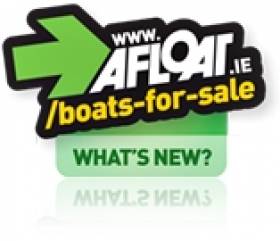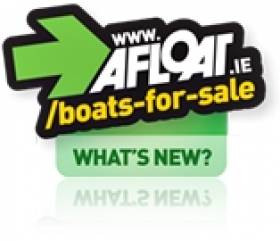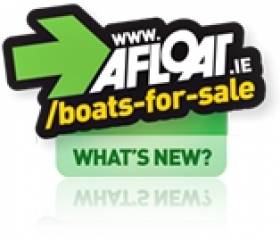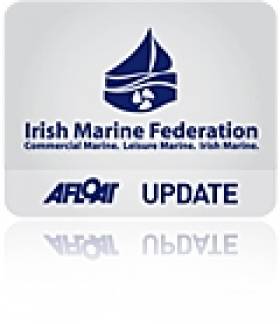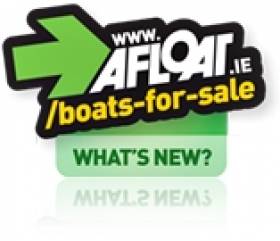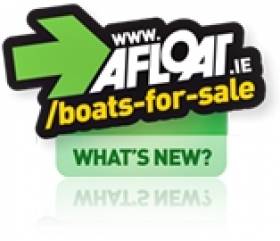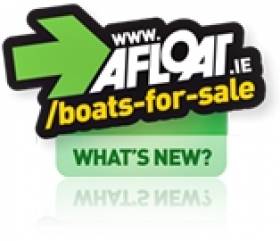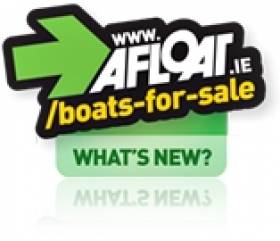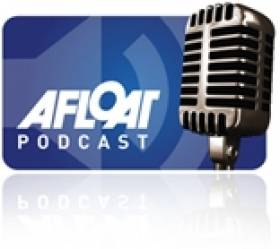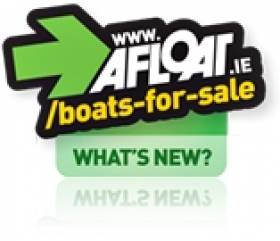Displaying items by tag: boats for sale
For Sale: Tony Castro One Off 3/4 Tonner
For Sale: 1987 Westerly Storm 33
Jeanneau Merry Fisher 695 on the Market
One of the most popular sports cruisers in the country, Jeanneau's Merry Fisher 695 has just been added to Afloat's boats for sale site. This boat has been lightly used and is in excellent condition for a 2001 model. There are 176 hours on the clock and all the details including photos and asking price are HERE.
Irish Brokers on Look Out for More Boats to Sell
It might be the least expected outcome after a torrid two years in boat sales but now Irish brokers have few large boats left to sell. The scarcity stems from the fact that Irish second-hands have been snapped up by foreign bargain hunters over the past two years.
1965 Prout Ranger Catamaran For Sale
A 1965 built sailing catamaran originally owned by author Jim Andrews who wrote about the yacht in his book “Twelve Ships a Sailing”, is for sale on the Afloat boats for sale site. More recently “Twintail”, a Prout Ranger, has cruised the West Coast of Scotland and Irish Sea areas with both her current and previous owner. The current owner has added a wheelhouse that provides full protection for the helm position. The UK built boat is for sale at £12,500 STERLING. The broker, Blue Flag boats of Northern Ireland says it is a strongly built and well proven design. Photos and full details here.
West Cork Based MacGregor 26x Sailing Cruiser Goes On Sale
A West Cork based MacGregor 26x trailer sailer has gone on sale on the Afloat boats for sale website. It is the latest in series of modestly priced family cruisers that have been added to the site in recent weeks. The year 2000 model comes with a Yamaha 50 hp outboard,lightly used according to the private owner selling this boat. The sailing cruiser has been wintered ashore. It comes complete with roller furling jib, genoa and mainsail. The boat is antifouled with a road trailer and is priced at E1300. Full advert here.
West Cork Based MacGregor 26x Sailing Cruiser Goes On Sale
A West Cork based MacGregor 26x trailer sailer has gone on sale on the Afloat boats for sale site. The year 2000 model comes with a Yamaha 50 hp outboard,lightly used according to the private owner selling this boat. The sailing cruiser has been wintered ashore. It comes complete with roller furling jib, genoa and mainsail. The boat is antifouled with a road trailer and is priced at E1300
Two Starter Sailing Cruisers for Sale
Two modestly priced sailing cruisers have recently been added to Afloat's boats for sale website. One is for sale privately, the other is for sale through a County Cork broker. According to the advert the 1969 Westerly Centaur has a brand new Beta 25hp engine, shaft and prop. It was surveyed last month, is antifouled and ready to sail at her mooring in Cork Harbour. Described as a 'solid and safe' 26 ft bilge keeler, Masquerade was the ninth Centaur built by Westerly and was constructed under Lloyd's supervision. The certficate of construction as well as all documentation and owner history is available. The boat is for sale at EUR12,500 and is an Ideal family or starter boat. More details here
The other recently added boat for sale is a similarly sized 1987 Yamaha 25. The sailing cruiser is fitted with a Yanmar 8hp engine. It is for sale through broker Hugh Mockler of HM Yachts, a firm who have made strides in marketing yachts for sale through digital media such as afloat.ie, facebook and twitter. Mockler describes the Yamaha as a 'lovely clean boat that comes with its own 4 wheel road trailer and all working electronics'. 'It's a very nice starter boat with club racing potential', he adds. View the boat here.
Tips on buying a boat here and our full istings here.
Skiffs, short-handers and sharing
In this week's podcast we speak to Ross Killian about stepping back into an Olympic campaign and into a 49er for the first time. We profile a J105 that's ripe for short-handing in our boat of the week slot, and talk to Richard Glynn of Kilrush about the joys of boat sharing.
Albin Vega for Sale by HM Yachts
Looking for an 'all weather' boat? You may need to look no further. A 1978 Albin Vega has come on the market. It's the latest sailing cruiser addition to the Afloat boats for sale section of the website. It's a design that has all round sailing qualities and is a boat as responsive to lighter breezes as it is to brisk winds. This 1978 version, built in Sweden, is for sale through HM Yachts in Cork who describe it as 'a nice starter boat with a furling headsail'. She is in good condition, according to the broker. More details here. A youtube video clip of an Albin Vega sistership shows the design in action..


























